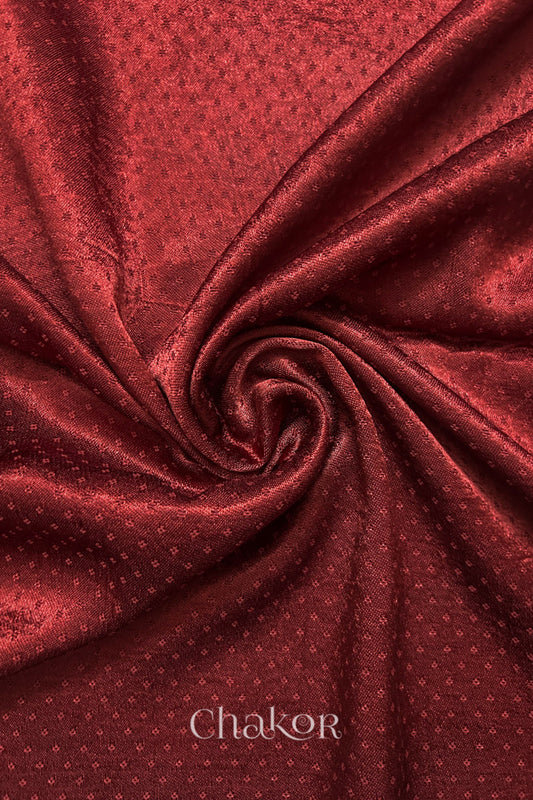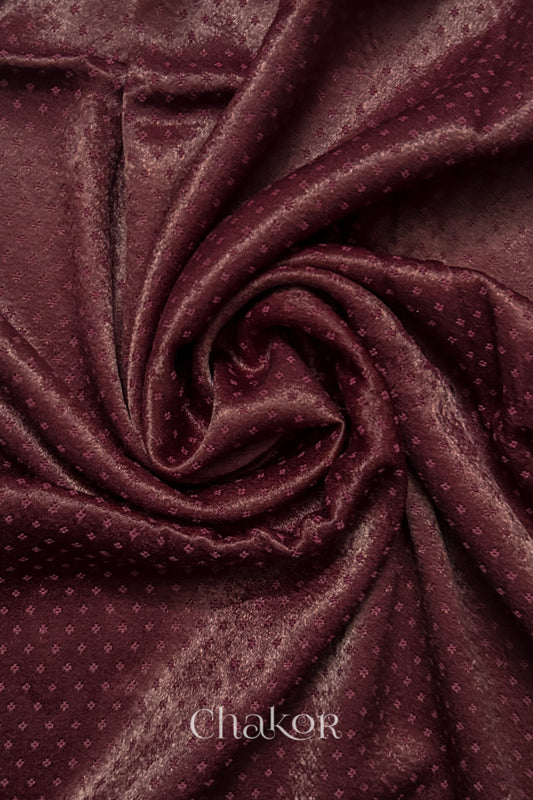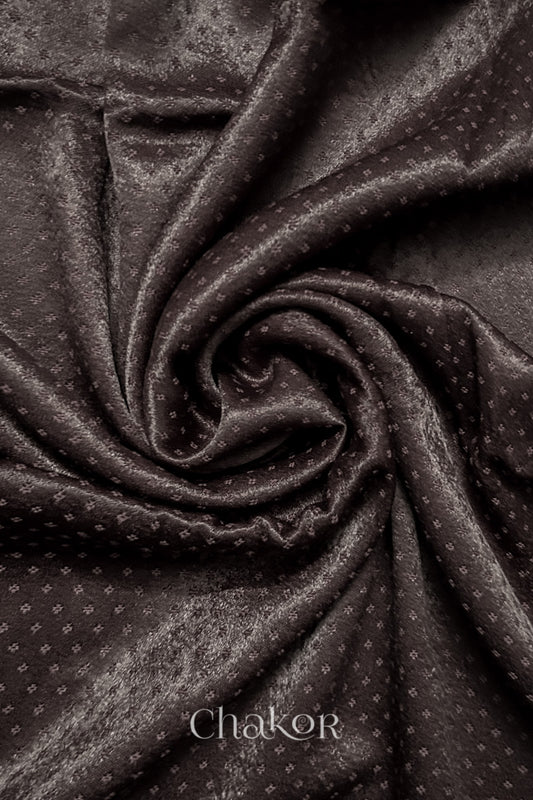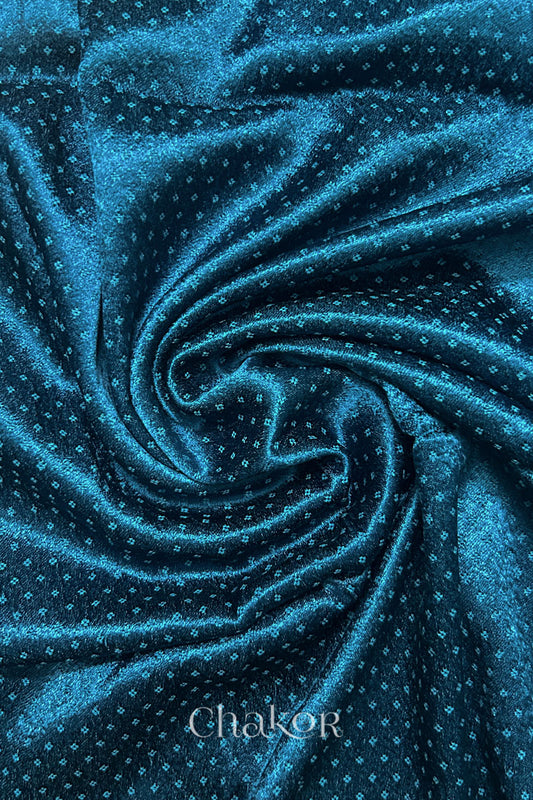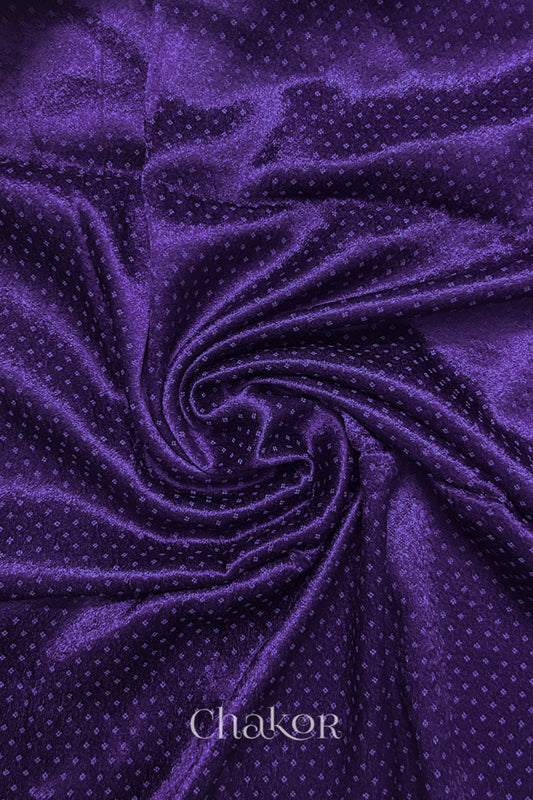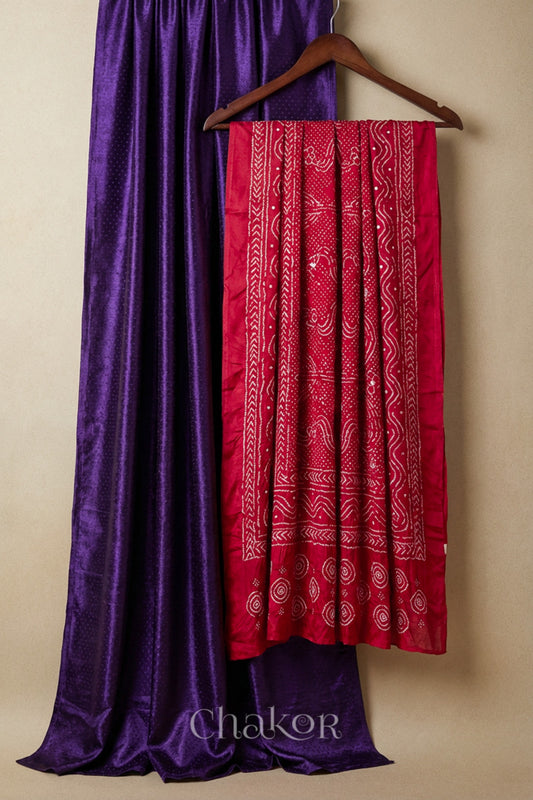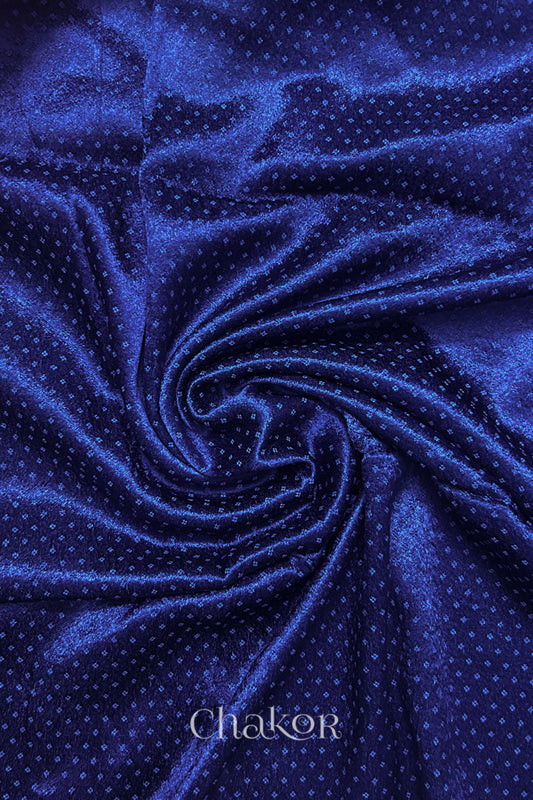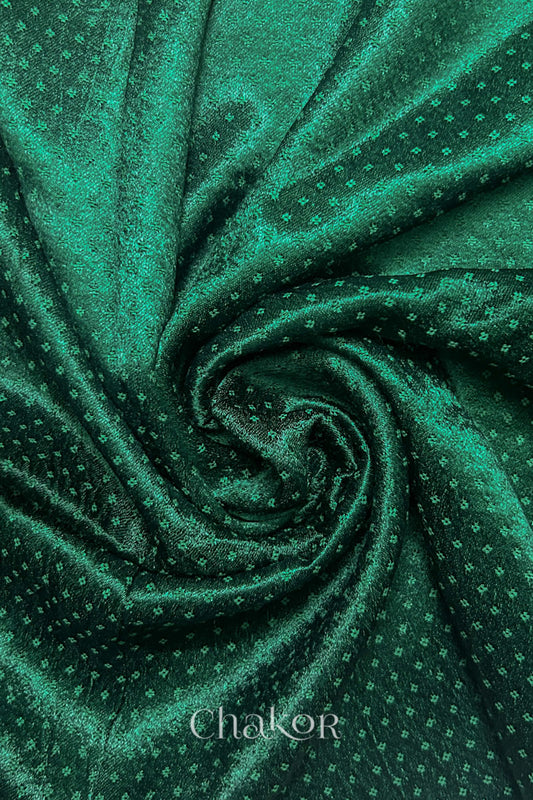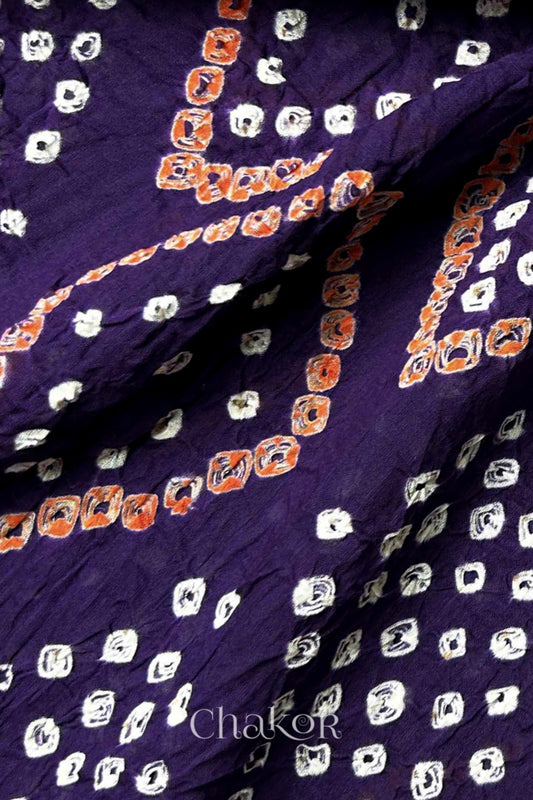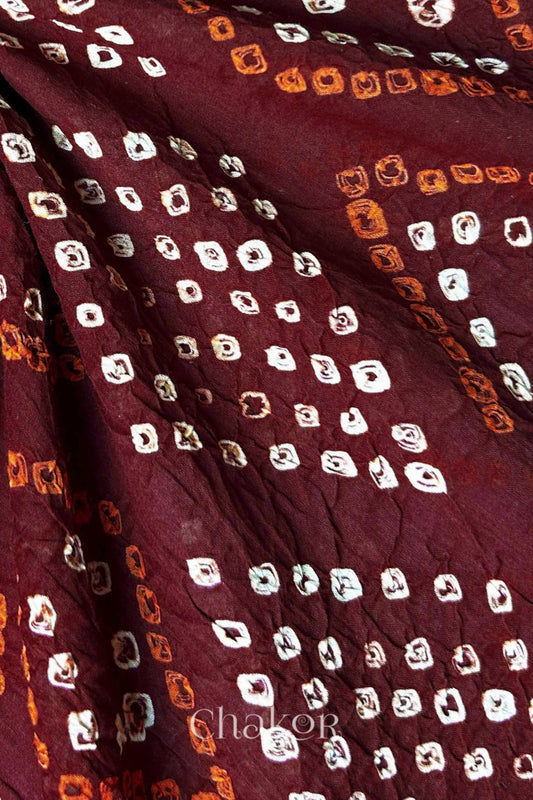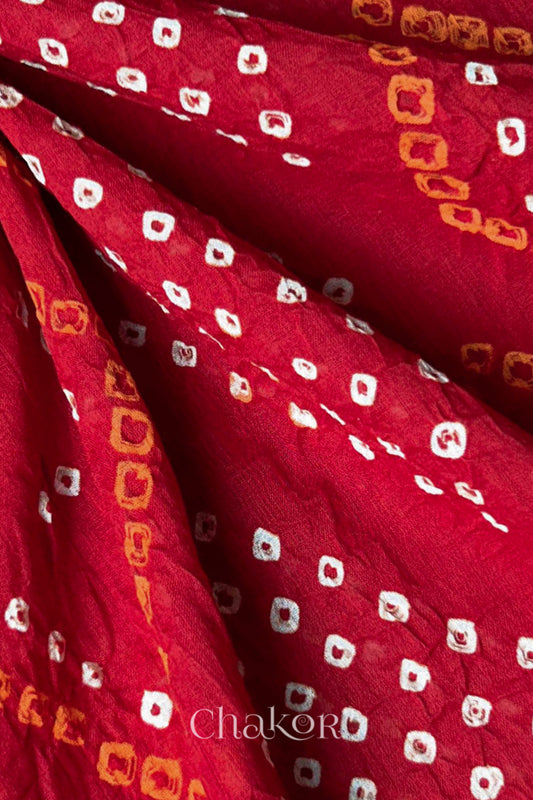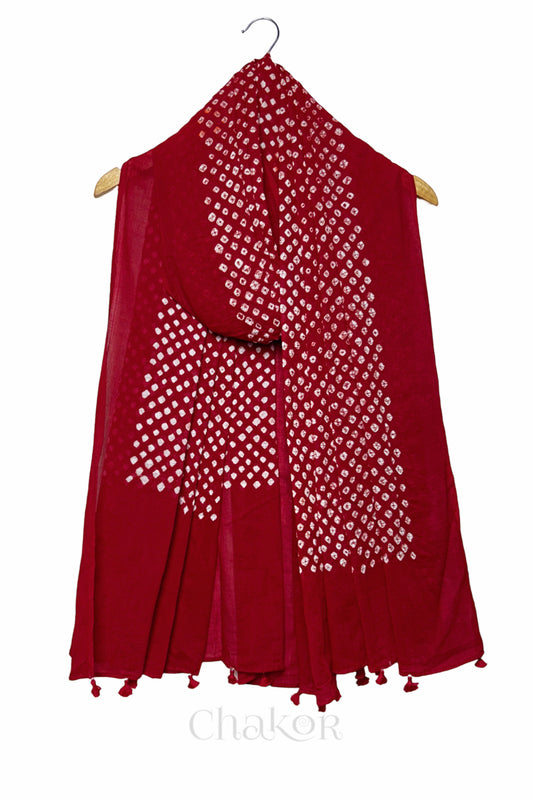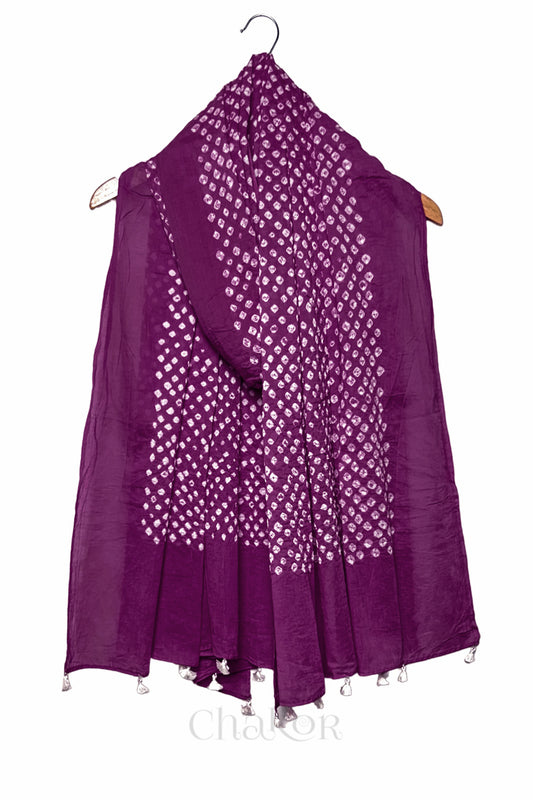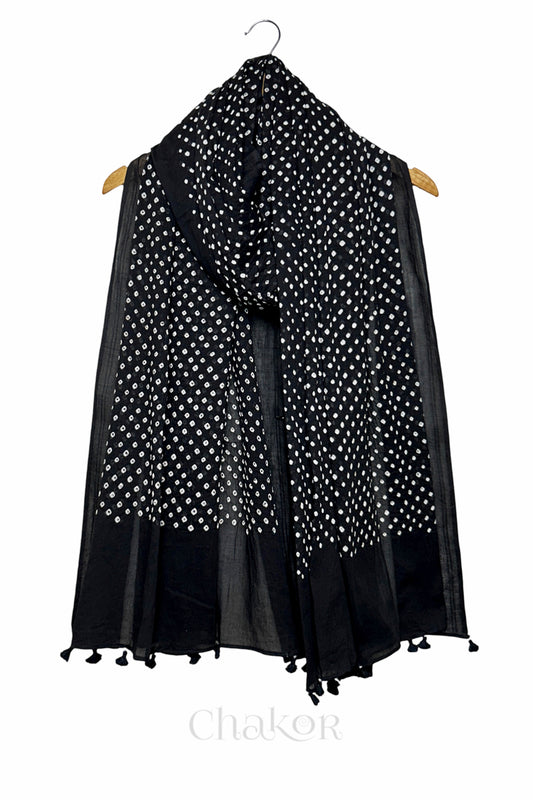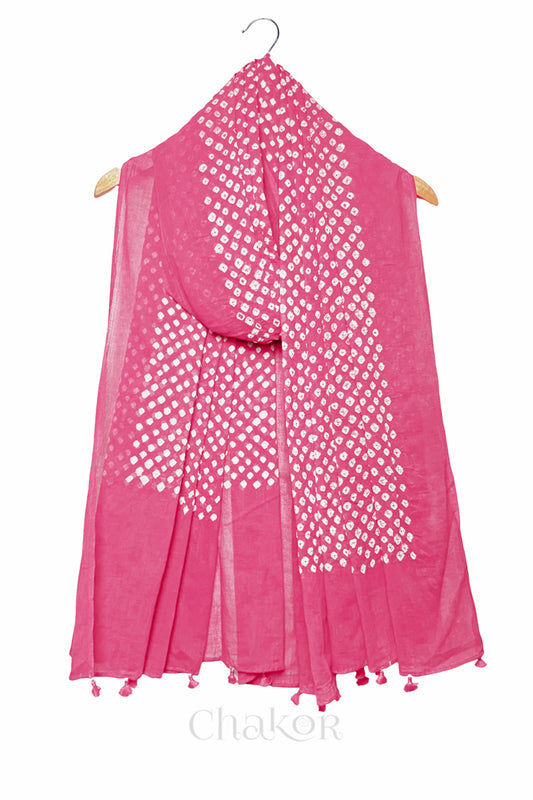Collection: Mashru

Chakor’s Silken Mashru - a collection of woven Kurta & Blouse Fabrics in Cotton viscose from Patan.
-
Brick Red Mashru Kurta Set Fabric with Bandhani Silk Dupatta
Regular price Rs. 13,750.00Regular priceUnit price / per -
Brick Red Mashru Kurta Set Fabric with Bandhani Silk Dupatta
Regular price Rs. 15,750.00Regular priceUnit price / per -
Brick Red Mashru Kurta Set Fabric with Bandhani Silk Dupatta
Regular price Rs. 15,050.00Regular priceUnit price / per -
Maroon Mashru Kurta Set Fabric with Bandhani Silk Dupatta
Regular price Rs. 15,050.00Regular priceUnit price / per -
Maroon Mashru Kurta Set Fabric with Bandhani Silk Dupatta
Regular price Rs. 12,450.00Regular priceUnit price / per -
Coffee Brown Mashru Kurta Set Fabric with Bandhani Silk Dupatta
Regular price Rs. 13,750.00Regular priceUnit price / per -
Dark Indigo Mashru Kurta Fabric with Bandhani Silk Dupatta
Regular price Rs. 13,650.00Regular priceUnit price / per -
Purple Mashru Kurta Set Fabric with Bandhani Silk Dupatta
Regular price Rs. 14,150.00Regular priceUnit price / per -
Purple Mashru Kurta Set Fabric with Bandhani Silk Dupatta
Regular price Rs. 18,250.00Regular priceUnit price / per -
Purple Mashru Kurta Set Fabric with Bandhani Silk Dupatta
Regular price Rs. 12,750.00Regular priceUnit price / per -
Purple Mashru Kurta Set Fabric with Bandhani Silk Dupatta
Regular price Rs. 16,750.00Regular priceUnit price / per -
Purple Mashru Kurta Set Fabric with Bandhani Silk Dupatta
Regular price Rs. 13,750.00Regular priceUnit price / per -
Royal Blue Mashru Kurta Set Fabric with Bandhani Silk Dupatta
Regular price Rs. 18,750.00Regular priceUnit price / per -
Royal Blue Mashru Kurta Set Fabric with Bandhani Silk Dupatta
Regular price Rs. 19,750.00Regular priceUnit price / per -
Royal Blue Mashru Kurta Set Fabric with Bandhani Silk Dupatta
Regular price Rs. 10,650.00Regular priceUnit price / per -
Royal Blue Mashru Kurta Set Fabric with Bandhani Silk Dupatta
Regular price Rs. 14,250.00Regular priceUnit price / per -
Royal Blue Mashru Kurta Set Fabric with Bandhani Silk Dupatta
Regular price Rs. 16,750.00Regular priceUnit price / per -
Dark Green Mashru Kurta Set Fabric with Bandhani Silk Dupatta
Regular price Rs. 17,750.00Regular priceUnit price / per -
Dark Green Mashru Kurta Set Fabric with Bandhani Silk Dupatta
Regular price Rs. 13,250.00Regular priceUnit price / per -
Dark Green Mashru Kurta Set Fabric with Bandhani Silk Dupatta
Regular price Rs. 18,750.00Regular priceUnit price / per
You may also like
Discover our handcrafted mul cotton dupattas with exquisite bandhani designs. Enhance your attire with these elegant and timeless accessories.
-
Purple Bandhani Mul Cotton Dupatta | Handmade Bandhej from Kutch
Regular price Rs. 1,850.00Regular priceUnit price / perRs. 1,850.00Sale price Rs. 1,850.00 -
Maroon Bandhani Mul Cotton Dupatta | Handmade Bandhej from Kutch
Regular price Rs. 1,850.00Regular priceUnit price / perRs. 1,850.00Sale price Rs. 1,850.00 -
Tomato Red Bandhani Mul Cotton Dupatta | Handmade Bandhej from Kutch
Regular price Rs. 1,850.00Regular priceUnit price / perRs. 1,850.00Sale price Rs. 1,850.00 -
Tomato Red Bandhani Mul Cotton Dupatta
Regular price Rs. 1,950.00Regular priceUnit price / perRs. 1,950.00Sale price Rs. 1,950.00 -
Magenta Bandhani Mul Cotton Dupatta
Regular price Rs. 1,950.00Regular priceUnit price / perRs. 1,950.00Sale price Rs. 1,950.00 -
Black Bandhani Mul Cotton Dupatta
Regular price Rs. 1,950.00Regular priceUnit price / perRs. 1,950.00Sale price Rs. 1,950.00 -
Yellow Bandhani Mul Cotton Dupatta
Regular price Rs. 1,950.00Regular priceUnit price / perRs. 1,950.00Sale price Rs. 1,950.00 -
Pink Bandhani Mul Cotton Dupatta
Regular price Rs. 1,950.00Regular priceUnit price / perRs. 1,950.00Sale price Rs. 1,950.00
Mashru
A textile born of tradition and necessity, Mashru is a centuries-old weave from Gujarat, where silk meets cotton in perfect harmony. With a cotton base for comfort and a radiant silk surface, Mashru was historically worn in desert climates and revered for its richness and breathability.
Our Mashru collection at CHAKOR features blouse fabrics in both plain and intricately hand-embroidered styles, with detailed mirror and thread work. Available as pre-cut lengths, these pieces offer versatility for modern tailoring—be it for blouses, jackets, tops or festive accents. Future editions will introduce newer design interpretations in print and embroidery while staying true to the timeless charm of this heritage weave.
-
 Age Old Indian Crafts
Age Old Indian Crafts
-
 Exclusive Collections
Exclusive Collections
-
 Artisanal
Artisanal
-
 Handmade Locally
Handmade Locally
-
 Slow Fashion
Slow Fashion
-
 Sustainable
Sustainable
Silken Comforts - Mashru
Mashru (also spelled mashroo, misru, mushroo or mushru) is a woven cloth that is a blend of silk and cotton. Mashru with silk face and cotton inside was useful for various dresses and household items. Indigenous mashru was famous for its strength and aesthetics. There are varieties of mashru clothes, including gulbadan and sufi. Superior kinds of material are categorised as mashru; and lower quality are called sangi. Mashru is less expensive than pure silk
Religious admonition
The wearing of pure silk, particularly next to the skin, was widely held to be an impious luxury for good Muslims. Pure silk is not allowed to men, but women may wear the most sumptuous silk fabrics. Unlike pure silk, the blend was lawful. Hence, it was an acceptable and popular type of cloth among Muslim men in northern India and Pakistan. A similar type of cloth called kutnu was found in the Near East. The ikat velvet pieces which have been located so far and can be identified as Indian are similar in style to the mashru being woven in western India for the foundation and this may have been prepared specially for the conservative Muslim who did not use silk thread.
Weaving Techniques & Regions
Mashru textiles are characterised by their distinct weaving technique, where silk is used for the warp (lengthwise threads) and cotton for the weft (crosswise threads). This combination results in a fabric that has the softness and sheen of silk on one side and the comfort and breathability of cotton on the other. The textile is often used to create garments, especially for men's wear, such as turbans, caps, and garments like sherwanis.
The Evolution
Mashru weaving, concentrated in Gujarat, India, evolved into a specialised craft with intricate patterns. Regions such as Kutch, Ahmedabad, Patan, and Khambhat are renowned for their historical connection to Mashru. Skilled artisans in these hubs continue the tradition, ensuring the preservation of this unique textile craft with deep cultural significance.
Silky Mashru exhibits a diverse range of looks and designs. While multicoloured stripes are the most common patterns woven on the looms, Mashru fabrics also feature ikat patterns, ajrakh prints, and bandhani tie-dye designs. In the Kutch region, women from local communities incorporate this fabric into their attire, particularly the choli blouse known as Kanjari, and Ghaghara skirts. These garments, often adorned with intricate embroidery, are frequently worn by brides and other women during ceremonial occasions.
Mashroo was a royal craft, produced in large quantities for local elite and export markets In the 18th and 19th centuries, Mashru woven in the Kutch region found its way to Middle Eastern, Mediterranean, and African countries through exports. Initially reserved for royalty, Mashru fabrics were not only employed for clothing but also adorned furnishings within court settings. Today, with the decline of royal patronage, handloom Mashru is primarily reserved for ceremonial purposes, reflecting its historical significance in both regal attire and courtly interiors.
The Transition from Handloom to Powerloom
Cost factors in Handloom Mashru weaving encompass raw materials like luxurious silk, skilled labor for intricate hand-weaving, and the time-intensive process. The combination of delicate materials, skilled craftsmanship, and the traditional value associated with Mashru textiles contributes to higher production costs.
The introduction of powerloom technology has revolutionised Mashru weaving, offering advantages like increased speed, efficiency, and higher production volume. This shift promotes affordability and accessibility, meeting the demands of mass production. While powerlooms may lack the individuality of handwoven pieces, they contribute to broader industry trends, enhancing efficiency and reducing costs. This positive approach aligns with the textile sector's modernisation goals. Efforts are concurrently underway to balance mechanisation with the preservation of traditional craftsmanship. Organisations and initiatives promoting sustainable practices aim to support weavers, ensuring the continued legacy and cultural significance of Mashru weaving.
Beautiful fabrics, such as printed and embellished Mashru textiles, indeed add a unique richness to ensembles and contribute to a grand and luxurious appearance. Here are some ways in which Mashru fabrics enhance the overall aesthetic of garments, especially when paired with cotton or silk sarees:
- Texture and Sheen: Mashru fabrics, with their combination of silk or viscose and cotton, exhibit a luxurious sheen and soft texture. This natural lustre and feel contribute to the overall opulence of the ensemble.
- Contrast and Complement: When paired with cotton or silk sarees, embellished Mashru fabrics can provide a striking contrast or complement the primary fabric. The juxtaposition of textures and patterns adds depth and visual interest to the outfit.
- Versatility: Mashru fabrics are known for their versatility. They can be used to create a variety of garments, including sarees, blouses, and accessories. This versatility allows for creative combinations and layering, enhancing the overall richness of the ensemble.
- Embellishments and Embroidery: Embellished Mashru fabrics, such as those offered by Chakor, often feature intricate embroidery, embellishments, block prints or traditional handcrafted designs. These elements elevate the visual appeal and contribute to the grandeur of the outfit.
- Traditional Aesthetic: Mashru weaving has a rich cultural and historical significance. When incorporated into traditional attire like sarees and blouses, it imparts a timeless and classic aesthetic, adding a sense of heritage to the ensemble.

CHAKOR's Perfect Pairings
At Chakor, we offer a range of embroidered Mashru fabrics and ready-to-wear blouses, it implies a diverse selection to choose from. Embroidery adds an extra layer of detail and craftsmanship to the fabric, making it an ideal choice for those seeking a more ornate and festive look. Whether the embroidery is inspired by regional motifs, floral patterns, or intricate designs, it can significantly enhance the overall beauty of the Mashru fabric.
Mashru fabrics, especially when embellished and paired thoughtfully with other materials, contribute to a sense of richness, elegance, and grandeur in traditional ensembles like sarees and blouses.



